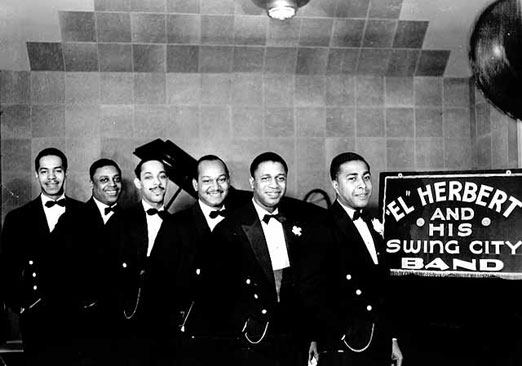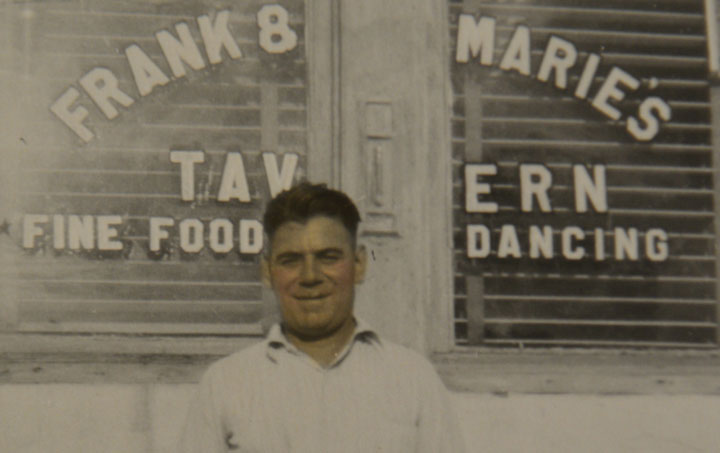Swing City
1682 Rice Street
St. Paul
Swing City was located at 1682 Rice Street, across the street from incorporated St. Paul.
Bob Patrin has done a great deal of research on this place; these are notes from conversations with Bob, augmented with research through the StarTribune archives and ancestry.com.
CITY LIMITS TAVERN
Bob said that the bar went back to about 1928, owned by a man named Harry Quatman. It started as a garage, then branched out to sodas, then to the City Limits Tavern, probably in 1933 at the end of Prohibition. News reports from November 1937 name Harry Quatman as the proprietor of the City Limits Tavern.
SWING CITY
Perhaps as a result of Quatman’s trouble serving beer to minors, the bar may have changed hands and names. The 1940 Census lists Quatman’s occupation as the owner of a beer place, but we don’t know if it’s this one.
A note in the Minneapolis Star said that the University crowd were flocking to Swing City in October 1937.
Jan Pongalos was named as the proprietor of Swing City when the place was raided in November 1942.
The photo below is El Herbert, Swing City’s house band in the ’30s.

FRANK AND MARIE’S
Quatman lost his liquor license, just at the same time that Patrin’s uncle, Frank Fietek, was discharged from the Army. Fietek was 38 when he registered for service in WW II, which was clearly stated on his form, but he only served six months and was discharged on March 31, 1943. Bob speculated that Frank was found to be too old. Frank received a certificate to start a business, and he took it to City Hall with the intent to own a tavern. He was given Quatman’s license and took over Swing City, renaming it Frank and Marie’s Tavern, after himself and his sister. Quatman had been given only three days to vacate, and evidence found in the garage indicated that it had been used as a brothel. Years later they discovered a “14 Board,” the most popular gambling game in the Twin Cities. Bob says that one band that played at Frank and Marie’s was Bob Smith and His Hawaiian Steel Band.

The mobsters were ticked off. Although they were hanging out at Happy Hollow across Rice Street, they wanted control of Frank & Marie’s as well, and were incensed when Frank turned down $2,000 in cash that his bagmen had offered him for the place. They offered “insurance,” but Frank declined. The bagmen tried to get to Frank through Marie by giving her an expensive alligator bag, but Frank still said no. Frank – whether on purpose or unwittingly – even riled the mob when his ad in a Hudson’s map was bigger than that of the mob-run McCarthy’s in St. Louis Park.
One night at closing in late November 1943, the bagmen kidnapped Frank, took him out to Rice Street and McCarron’s Blvd., broke both his legs, and left him on the road to be run over. Fortunately the speed limit was only 35, carefully watched because of wartime restrictions, and he was found by the Sheriff and taken to the hospital. But he could never walk again, and was taken to his brother Harry’s house at 120 Carroll Ave.
THE LAKEVIEW
The tavern was immediately renamed the Lakeview – Frank didn’t want Marie to be in peril. But in November 1945 the basement of the tavern was torched, causing $2,500 in damage. Frank closed it for good but still wouldn’t sell. Finally, on March 4, 1946, the bagmen went to where Frank was staying, dragged him to the basement, stood him on a woodpile, put a necktie around his neck (which he never wore), attached it to a wire, and kicked the wood away, virtually lynching him. Bob said the coroner never came, but the Minneapolis Star reported that the Ramsey County coroner was investigating Fietek’s death. Bob also said that no autopsy was done. In any case, it was deemed a suicide. Bob said that two weeks after Frank was murdered the bar was miraculously reopened – as Swing City.
From the Minneapolis Tribune of September 9, 1946, we learn that about a dozen men came to the Lakeview at closing time and started a near riot, sending four patrons to the hospital with cuts and bruises.
That’s the way Bob tells it, anyway. He has other details that have to do with the murder of journalist Arthur Kasherman, and somehow Kid Cann blamed Frank Fietek for Kasherman’s expose of corruption in Minneapolis politics, but I didn’t quite understand that. More details can be found in James Eli Shiffer’s article in the StarTribune.


